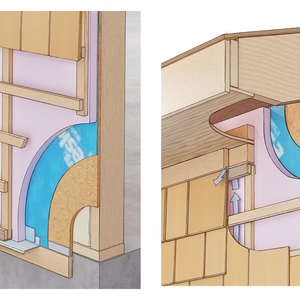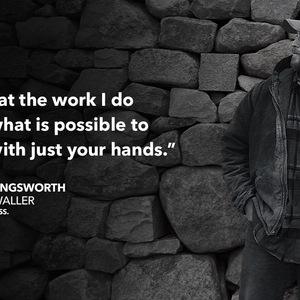I have a large trim project wich has alot of pocket doors. Most of the houses we trim have about 4-5 pocket doors. I know bidding is extreamly important especially with lots of competition in our area. I am going to offer to install the tracks myself for an additional $20 dollars and charging my normal rate for pocket door installation. If this dosen’t work I will have to visit the job site durring framming just before drywall with a level and check them out while I can make adjustments without tons of extra work. Anyone have any ideas? I don’t wan’t to have any additional labor that is concealed costing the builder and my-self troubles. Back charges leave a sour taste in peoples mouth.
Discussion Forum
Discussion Forum
Up Next
Video Shorts
Featured Story

Old masonry may look tough, but the wrong mortar can destroy it—here's how to choose the right mix for lasting repairs.
Featured Video
SawStop's Portable Tablesaw is Bigger and Better Than BeforeHighlights
Fine Homebuilding Magazine
- Home Group
- Antique Trader
- Arts & Crafts Homes
- Bank Note Reporter
- Cabin Life
- Cuisine at Home
- Fine Gardening
- Fine Woodworking
- Green Building Advisor
- Garden Gate
- Horticulture
- Keep Craft Alive
- Log Home Living
- Military Trader/Vehicles
- Numismatic News
- Numismaster
- Old Cars Weekly
- Old House Journal
- Period Homes
- Popular Woodworking
- Script
- ShopNotes
- Sports Collectors Digest
- Threads
- Timber Home Living
- Traditional Building
- Woodsmith
- World Coin News
- Writer's Digest


















Replies
stairs
As you well know, a pocket door relies on a good opening or at least a decent install. The doors themselves give you some leeway, but if the track (which in the case of usual Johnson hardware-the track and the "nailers". ) The finished jambs you are setting, so again-you've got room for adjustment.
but,
If the opening etc is near perfect, then the rest of the operation goes smooth.
Level track is one part-plum opening another.
Best of luck.
The pocket doors I typically use come with a knock down frame, the track is mounted on a board. The frames have to go in before the drywall since the pocket area frame gets covered with the drywall. The drywall installers have to know to use short screws into the door frame so long tips don't stick into the pocket. The same with trim nails for casings and baseboard. Normally, the rough openings for the frame are slightly larger both side to side and on top so things can be shimmed for plumb and level. When the doors are hung, there are two extra pieces of trim that are applied to the frame where the door slides in rather than one solid side jamb, the casings attach to these pieces, held back from the edge for a typical reveal. I usually also add two pieces of trim on either side of the top track to hide it. These get installed with screws and finishing washers so they can be removed if the door ever needs to be removed or adjusted, they go in after the side jamb pieces are installed so they can come out. The header casing laps over these just like a side jamb but isn't nailed into them.
Since the frames have to be installed before the drywall, it means an extra trip to the job site before it is ready to trim out. If the rough openings are framed to the correct size, there shouldn't be any need for you to do any additional work on those unless the framers didn't keep things flush. The drywall has to make a straight transition from the framing across the pocket door frame. Place the frame plumb and level and place the track level, all are shimmed as necessary. The strike side jamb is installed after the door is in the track and adjusted for plumb, the strike jamb board is shimmed to fit against the door. There is a little bit of extra work ripping and installing the 4 pieces that go on the top and on either side of the pocket frame. Some pocket door pulls can involve extra work in morticing them in, others are pretty simple and just require a notch in the door edge.